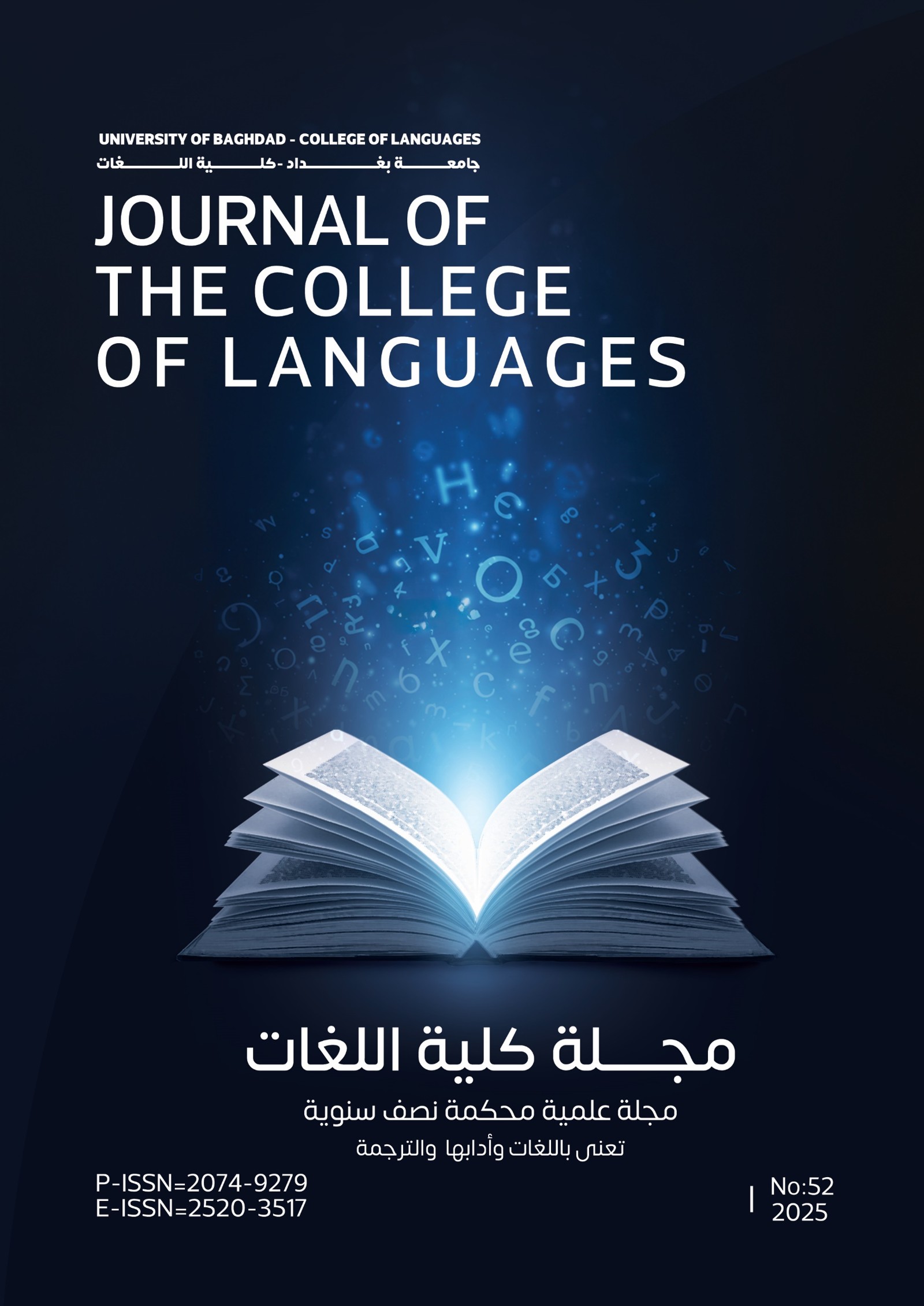Configuring the Masculine Identity of Frank Money in Toni Morrison’s Home
DOI:
https://doi.org/10.36586/jcl.2.2025.0.51.0041Keywords:
masculinity, Frank Money, Home, Toni Morrison, intersectionality.Abstract
This paper aims at analyzing how gender, race, and class interact and how such interaction affects the way the masculine identity of Frank Money is formed in Home (2012) by Toni Morrison. I attempt to analyze Morrison's depiction of manhood and investigation of masculinity in the context of her book by adopting a particular interpretation of the concept of intersectionality. The novel's storyline demonstrates the conflict between racial identity and the social standards of masculinity, which is seen in how socioeconomic gender roles, class, and maybe racial bias are portrayed. To effectively comprehend and address the challenges and injustices experienced by people with multiple marginalized identities, we must take an intersectional approach when addressing problems associated with race and gender together. This method makes it possible to analyze social issues more thoroughly and to create inclusive, successful campaigns to advance social justice and equality. My intention is to examine the author's skillfully crafted depiction of Frank Money's refusal to conform to the identity imposed upon him by oppressive power.
References
Carastathis, A. (2014). The Concept of Intersectionality in Feminist Theory. Philosophy Compass, 9(5), 304–314. https://doi.org/10.1111/phc3.12129
Collins, P. H. (2000). Black Feminist Thought: Knowledge, Consciousness, and the Politics of Empowerment (2nd ed.). New York: Routledge.
Crenshaw, K. (2018). Demarginalizing the Intersection of Race and Sex: a Black Feminist Critique of Antidiscrimination Doctrine, Feminist Theory, and Antiracist Politics [1989]. Feminist Legal Theory, 1989(1), 57–80. https://doi.org/10.4324/9780429500480-5
Daniel, L. (2012, May 24). Home by Toni Morrison: review. Retrieved from The Telegraph website: https://www.telegraph.co.uk/culture/books/bookreviews/9272768/Home-by-Toni-Morrison-review.html
Du Bois, W. E. B. (William E. B., Griffin, F. J., & Internet Archive. (2003). The souls of Black folk. In Internet Archive. New York : Barnes & Noble Classics. Retrieved from https://archive.org/details/soulsofblackfol300dubo
Limbu, D. (2014). Representation of the Korean War in Toni Morrison‟s Home. Retrieved from http://elibrary.tucl.edu.np/handle/123456789/3298
McDowell, L. (2012, May 5). Home, By Toni Morrison. Retrieved from the Independent website: https://www.independent.co.uk/arts-entertainment/books/reviews/home-by-toni-morrison-7717384.html
Meer, Naser. (2014). Key concepts in race and ethnicity. Los Angeles, Calif. Sage.
Michele Tracy Berger, & Guidroz, K. (2009). The intersectional approach : transforming the academy through race, class, and gender. Chapel Hill: University Of North Carolina Press.
Morrison, T. (2012). Home. New York: Alfred A. Knopf.
The-oxford-English-dictionary - Definition, pictures, pronunciation and usage notes | Oxford Advanced Learner’s Dictionary at OxfordLearnersDictionaries.com. (2023). Retrieved from Oxfordlearnersdictionaries.com website: https://www.oxfordlearnersdictionaries.com/definition/english/the-oxford-english-dictionary
Wallace, M. O. (2002). Constructing the Black Masculine. Duke University Press.
Downloads
Published
Issue
Section
License
Copyright (c) 2025 Journal of the College of Languages (JCL)

This work is licensed under a Creative Commons Attribution 4.0 International License.








